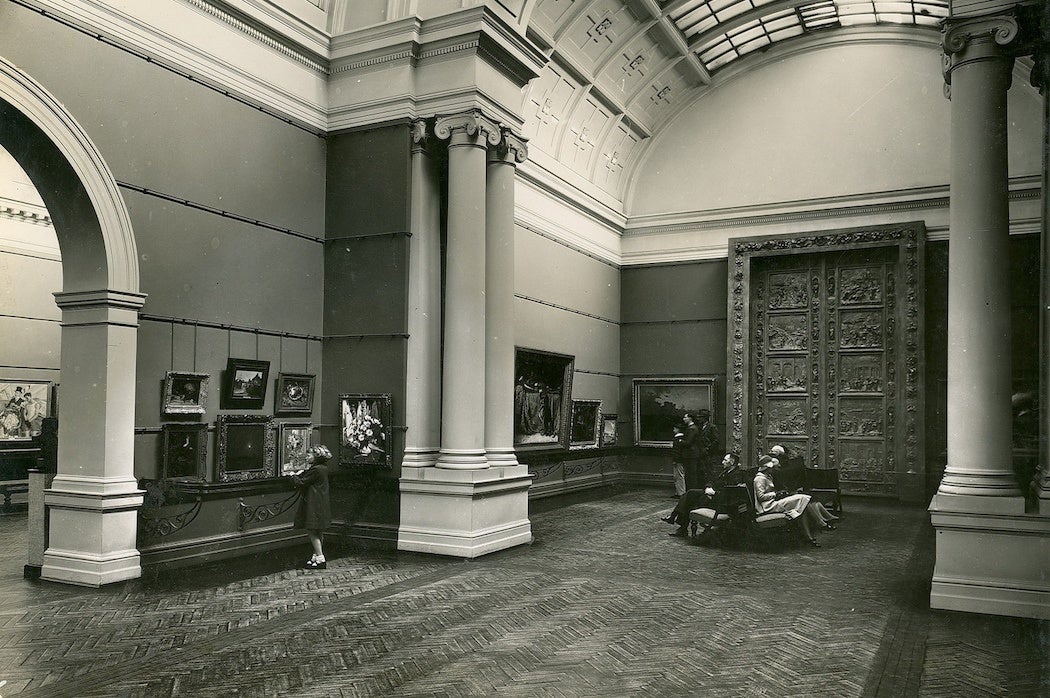In The News
In this weekend’s Guardian, Stewart Lee offered a satire of the growing overuse of the term “curator:”
This morning I heard a radio interview with the British Dental Association’s curator of dental history, Dr Margaret Wilson, her suspicious job title alone suggesting a whitewash is in progress. Perhaps it will turn out that teeth never occur naturally in humans, and are inserted at birth to generate dentistry revenue.
We can, however, trace the concept of a curator using its Latin root, “curato,” which evokes the general practice of healing or performing a surgical procedure, which translates, perhaps, into a more general sense of guidance, management, and administration.
Further Reading in JSTOR
Michael Shott, writing in the Journal of Anthropological Research, argues that the term “curation” should be used quite narrowly to refer to the retention of tools for expected reuse. Some cultures curate more than others, he says, and some materials exhibit extensive curation.
Through this lens, we can understand our own curatorial practices as a product of our consumption habits. And we can understand our accumulated material possessions as tools with potential future utility, not just as scrapbooked ticket stubs or endlessly reblogged Doge memes. What that future research or exhibit purpose might be, we can’t see, but it stands to reason that there will be future research and exhibitions.
* * *
Liz Rohan also has some ideas: she looks at collecting and organizing from an educational perspective, exploring how literacies are built through students’ hobbies, interests, and even their compulsions. She assigns her students activities that involve asking questions of their own collections—music, childhood mementos, diaries and journals, receipts—to pick out patterns and see where their personal experiences reflect the influences of dominant culture:
Some collections are undertaken consciously for an overt and culturally clear purpose—as with arranging photos in a photo album to tell a story, to remember, and to serve as a complement to other activity—photography. Other collections might be more or less haphazard, undertaken beneath our level of awareness, as with a junk drawer or even an office bulletin board.
Rohan describes the work performed by her students, inspired by their childhood selves as seen through their artifacts, as a “collaboration.” She argues that collected items always have different values in their new juxtapositions:
When all texts become, for whatever reasons, artifacts in personal collections, their original context as private or public is often irrelevant…. They are waiting always to be reborn when rediscovered, reread, and repurposed.
* * *
What do museum curators think of all this? The practice of curation in a museum or gallery setting has been in flux long since before the internet made everyone a connoisseur of fine assemblages. In 1998, Michael Brenson wrote in Art Journal that “the era of the curator has begun.” Brenson writes of conference discussions that revolve around conceptual “constellations” that include “impurity, partiality, and incompleteness,” “hybridity, reciprocity, negotiation, and reconciliation,” and “self-consciousness, openness, and transparency and phrases such as ‘declaring yourself.’”
Curators, Brenson declares, must have a “sophisticated awareness of the histories and implications of the ideas they are working with and of the economic and political systems they are working within, as well as an ability to build this awareness into their curatorial presentations.” Curation is an artistic practice that also constitutes social commentary. And it is a creative endeavour, one that functions best when it provokes thought and creates a learning experience for the viewer, even if the viewer and curator are one and the same person, as with Rohan’s students. In its best form, curation is a way to keep ourselves humble as we celebrate our triumphs over loss, destruction, and decay.







